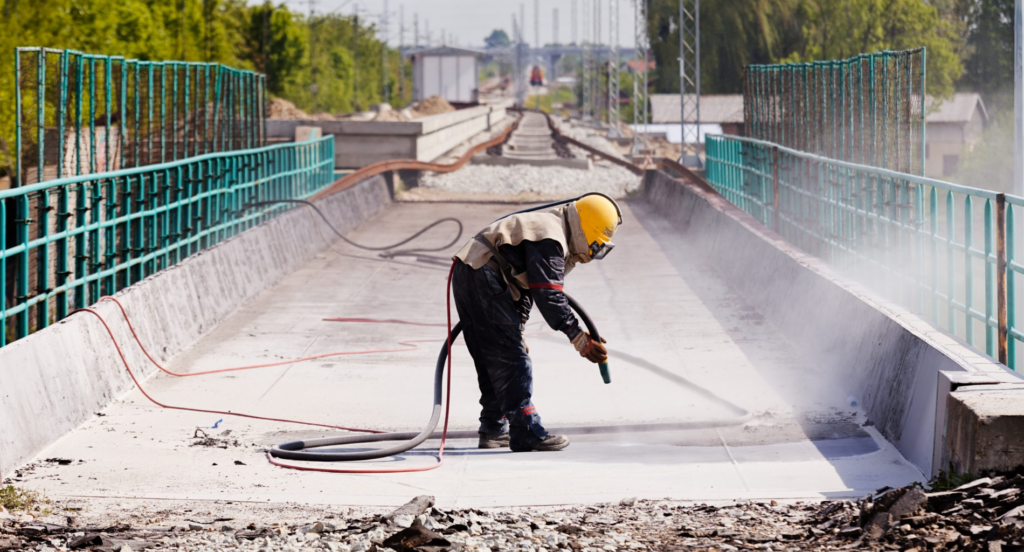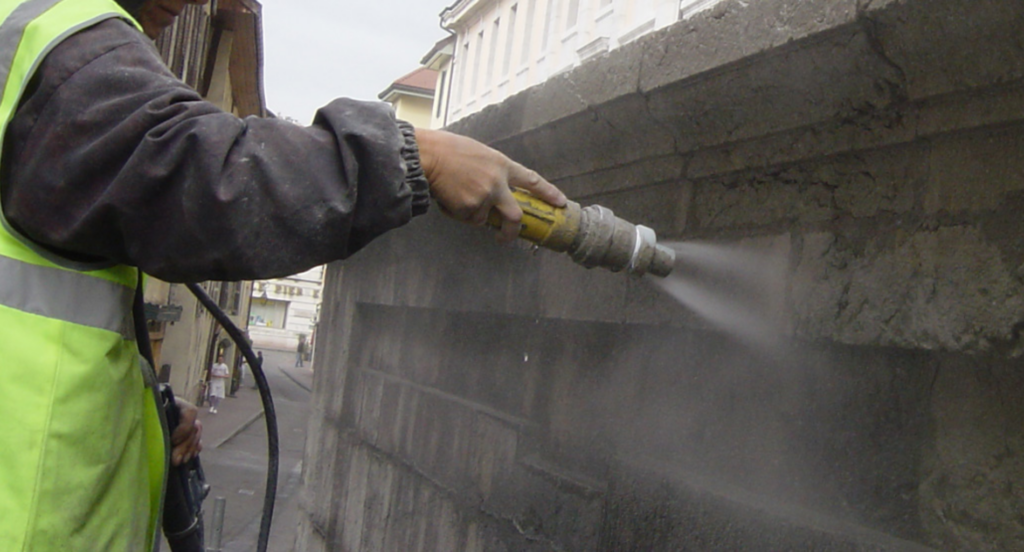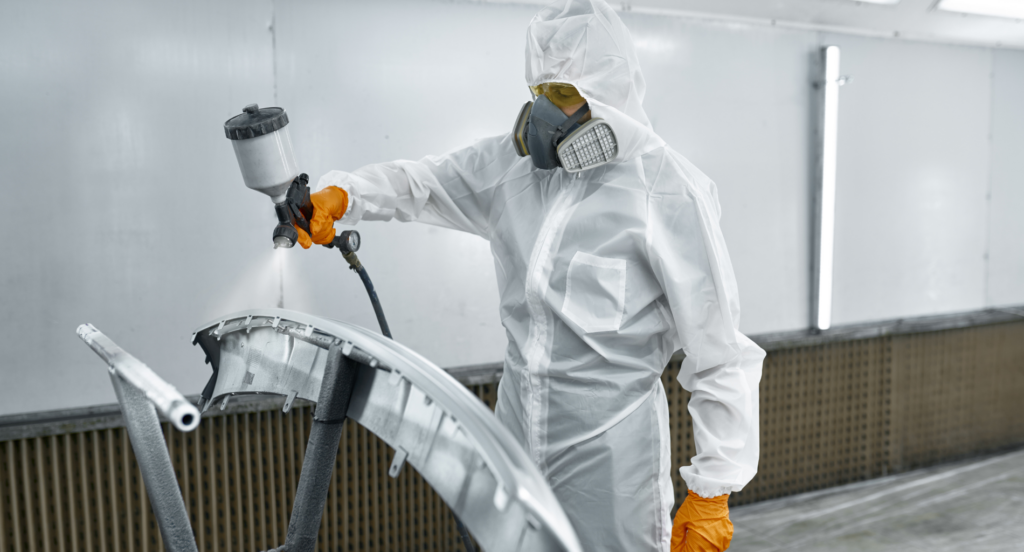Are you striving to elevate the quality of your metal products through advanced blasting and painting techniques? Understanding these techniques will surely enhance the performance of your metal fabrications.
As an expert in the metal fabrication industry, I bring knowledge and experience that are grounded in years of hands-on practice and continuous learning. Making sure that the information I share is reliable and relevant.
Blasting and painting are techniques that require precision, understanding, and skill. The right approach can significantly impact the final product’s quality, protection, and appearance.
In this guide, we will delve deep into the depth of blasting and painting techniques. You will learn about the best practices, the latest innovations, and the most efficient methods to achieve optimal results.
Keep reading to uncover the potential of these techniques.
1. Overview of Blasting and Painting
Blasting and painting are integral processes in metal fabrication, each serving a distinct purpose. Blasting, often the first step, involves using abrasive materials to clean and prepare the metal surface. This process is essential for removing impurities, rust, and old paint, providing a clean slate for painting. It also creates a textured surface that enhances paint adhesion, crucial for the longevity of the coating.
Painting follows blasting, where a protective and aesthetic layer is applied to the treated metal surface. This step involves selecting the right type of paint and application technique to ensure durability, corrosion resistance, and overall quality. The choice of paint and method of application can significantly impact the product’s performance in various environments, making this step as critical as the preparation phase.

2. Benefits of Blasting and Painting
After having an overview of blasting and painting, it’s essential to understand the numerous benefits these processes offer in metal fabrication. Here are some key benefits:
Enhanced Durability
Blasting effectively removes surface imperfections, which ensures a stronger bond between the metal and the paint. This process significantly enhances the durability of the coating, thereby extending the lifespan of the metal product. A well-applied paint layer further protects the metal from environmental factors like moisture and chemicals, preventing corrosion and wear.
Improved Adhesion
The rough texture created by blasting provides an ideal surface for paint adherence. This improved adhesion is vital for preventing peeling, blistering, and other common problems of paint on metal surfaces. A strong bond ensures that the paint remains intact, preserving both the aesthetic and protective qualities of the coating.
Aesthetic Enhancement
Painting is not just a protective measure; it also plays a significant role in the aesthetic appeal of the final product. The right choice of color and finish can transform a simple metal piece into an attractive product that stands out. This visual appeal is crucial, especially for consumer-facing products where appearance can significantly influence purchasing decisions.
Cost-Effectiveness
In the long run, proper blasting and painting techniques can prove to be cost-effective. By increasing the longevity and reducing the need for frequent repairs or replacements, these processes offer a solid return on investment. Additionally, the prevention of rust and corrosion minimizes maintenance costs, making it a financially sound practice for any metal fabrication business.
3. Types of Blasting Methods
Building on the benefits of blasting and painting, it’s important to recognize the variety of blasting methods available, each suited to different requirements in metal fabrication. Here are some of the primary types:
Sandblasting
Sandblasting is one of the most common methods, using high-pressure sand particles to clean and texture the metal surface. It’s particularly effective for removing rust, scale, and old paint, preparing the surface optimally for painting. This method is versatile and can be used in a wide range of metal types and sizes.

Bead Blasting
Bead blasting employs fine glass beads at high pressure to achieve a smooth and clean surface without causing damage to the metal. Zemetal utilizes this method during metal fabrication for delicate surfaces where rougher blasting techniques might be too aggressive, ensuring a uniform, matte finish.

Soda Blasting
Soda blasting uses sodium bicarbonate (baking soda) as the blasting medium. It’s a gentle method, perfect for cleaning surfaces without altering the metal’s integrity. This technique is particularly useful for cleaning delicate parts and for removing surface deposits without damaging the underlying material.

4. Different Types of Painting Techniques
Following our exploration of blasting methods, let’s transition to the various painting techniques that can be applied in metal fabrication. These methods cater to different aesthetic and functional needs:
Powder Coating
Powder coating is a popular painting technique where a dry powder is electrostatically applied and then cured under heat. This method provides a durable, uniform, and attractive finish, resistant to chipping, fading, and scratching. It’s ideal for products that require a high-quality finish and long-term durability.

Spray Painting
Spray painting is a versatile and widely used technique that involves spraying paint onto the metal surface. This method, employed effectively by Zemetal, allows for quick and even application in large areas and is adaptable to various types of paint and finishes. It’s suitable for both large-scale industrial projects and finer, detailed work.

Dip Painting
Dip painting involves immersing the metal object into a vat of paint, ensuring a complete and even coating. This technique is especially effective for complex shapes where achieving uniform coverage through other methods might be challenging. Dip painting is often used for smaller parts and components, providing a consistent, smooth finish.

5. Innovations in Blasting and Painting Technology
Moving from the different types of painting techniques, it’s crucial to highlight the recent innovations in blasting and painting technology that are transforming metal fabrication. Below are the following:
Automated Blasting Systems
Automated blasting systems represent a significant leap in efficiency and consistency. These systems use advanced robotics and controlled settings to ensure uniform cleaning and surface preparation. They reduce labor costs, improve safety, and provide consistent results, especially beneficial for large-scale and high-volume projects.
Eco-Friendly Paints and Coatings
The development of eco-friendly paints and coatings is a response to growing environmental concerns. These innovative products minimize harmful emissions and reduce environmental impact without compromising on quality or durability. They are increasingly favored in industries committed to sustainability and regulatory compliance.
Advanced Application Techniques
Recent advancements in application techniques, such as electrostatic spray painting and high-volume, low-pressure (HVLP) spray systems, offer improved efficiency and finish quality. These technologies ensure better paint adhesion, reduced waste, and a more uniform coating. They cater to the need for precision in complex and detailed metal fabrication projects.
6. Cost Analysis of Blasting and Painting Projects
In light of the innovations in blasting and painting technology, thorough cost analysis is essential for businesses to make informed decisions. Understanding these costs ensures efficient budgeting. Let’s explore each cost:
Material Costs
Material costs form a significant portion of the overall expenses in blasting and painting projects. This includes the cost of abrasives for blasting and the type of paint or coating used. Higher quality materials typically incur higher costs, but they can offer better durability and longevity, which may reduce long-term expenses.
- Abrasives for Blasting: Prices can range from $50 to $200 per ton, depending on the type and quality.
- Paint and Coatings: Standard industrial paints may cost between $15 to $50 per gallon, while specialized coatings can go up to $100 to $200 per gallon.
Labor and Time Efficiency
Labor costs are influenced by the complexity and scale of the project. Automated systems and advanced techniques can lead to higher initial investment but result in significant labor savings over time. Efficiency in project execution also plays a crucial role, as faster completion reduces labor costs and minimizes downtime.
- Manual Labor Costs: Skilled labor can cost anywhere from $20 to $50 per hour, varying by region and expertise level.
- Automated System Savings: While the initial investment for automated systems can be substantial (ranging from $10,000 to $100,000), they can reduce labor costs by up to 50% in the long term.
Equipment and Maintenance
The cost of purchasing and maintaining equipment for blasting and painting is an important consideration. While investing in high-quality, advanced equipment might initially be more expensive, it can offer better efficiency and longer service life, thereby impacting the overall cost-effectiveness of projects.
- Equipment Purchase: Basic blasting equipment starts at around $1,000, with advanced systems reaching $20,000 or more.
- Maintenance Costs: Regular maintenance of equipment can account for 5-10% of the initial purchase price annually, depending on usage and complexity.
7. Comparative Analysis: Blasting vs. Painting
Following the discussion on the cost analysis of blasting and painting projects, it’s beneficial to understand how blasting and painting differ from each other in metal fabrication. Here’s a comparative analysis:
Process
The processes of blasting and painting are fundamentally different, each with its unique steps and objectives.
- Blasting: In metal fabrication, blasting involves using abrasive materials directed at high speed onto the metal surface. This method effectively cleans the surface, removing rust, old paint, and other contaminants. The process also creates a rough texture on the metal, crucial for the adhesion of subsequent coatings.
- Painting: Painting, on the other hand, involves applying a coat of paint to the prepared metal surface. This step is performed after blasting and requires selecting suitable paint and application techniques. The objective is to provide both aesthetic appeal and protective properties, like corrosion and wear resistance, to the metal.
Purpose and Function
The purpose and function of blasting and painting are distinct, each playing a specific role in metal fabrication.
- Blasting: The primary purpose of blasting is to prepare the metal surface for further processing. It’s not just about cleaning; it also involves creating an appropriate surface profile that enhances the adhesion of paints or coatings. Blasting can also strengthen the metal by inducing a certain level of stress.
- Painting: The function of painting extends beyond mere aesthetics. It serves as a protective barrier that shields the metal from environmental factors like moisture, UV rays, and chemical exposure. Painting also plays a significant role in the branding and customization of products through color and finish choices.
Techniques and Materials
Blasting and painting use different techniques and materials, each tailored to their specific objectives.
- Blasting: Techniques in blasting vary widely, from sandblasting and bead blasting to more specialized forms like hydro-blasting. The choice of abrasive material—be it sand, glass beads, or other specialized media—depends on the desired surface finish and the type of metal being treated.
- Painting: Painting techniques in metal fabrication range from conventional brush and roller applications to more advanced methods like spray painting and electrostatic painting. The type of paint used can vary greatly, from epoxy and enamel to polyurethane and acrylic, each offering different benefits in terms of durability, finish, and application properties.
8. Safety Measures in Blasting and Painting
With the blasting and painting comparison, it’s equally vital to focus on the safety measures essential in these processes. Ensuring also enhances the efficiency and quality of the work. Here are the measures that you should implement:
Personal Protective Equipment (PPE)
Workers must be equipped with appropriate PPE, including respirators, safety goggles, gloves, and protective clothing. According to Fortune Business Insights, PPE’s will exhibit a rate of 7% from 2023-2031. This surge highlights the importance of gear in protection from harmful dust, chemicals, and debris generated during blasting and painting.
Ventilation and Dust Control
Effective ventilation systems are essential to remove fumes and dust from the work area. This prevents the inhalation of harmful particles and maintains a clean working environment. In closed environments, dust collection systems are necessary to capture airborne particles. By doing so, it reduces the risk of respiratory issues and ensuring compliance with health and safety regulations.
Training and Best Practices
Regular training on equipment use, safety protocols, and emergency procedures is critical for all personnel involved in blasting and painting. Implementing best practices, such as proper storage of materials and adherence to safety guidelines, ensures a safe and productive working environment. Empower your team with knowledge and skills, fostering a culture of safety and excellence that sets your business apart.
This table outlines essential training areas and best practices in the blasting and painting industry, emphasizing the importance of safety and efficiency to create a superior working environment.
| Training/Best Practice | Description | Impact on Work Environment |
| Equipment Use Training | Comprehensive instruction on proper equipment handling | Enhances operational efficiency and safety |
| Safety Protocol Training | Regular updates on safety guidelines and procedures | Reduces accidents, ensures worker safety |
| Emergency Procedure Drills | Regular drills to prepare for potential emergencies | Improves response time, minimizes hazards |
| Proper Material Storage | Guidelines for storing paints, solvents, and equipment | Prevents hazards, maintains organization |
| Adherence to Safety Guidelines | Consistent enforcement of safety rules and regulations | Cultivates a culture of safety and care |
9. 3 Tips for Prolonging the Life of Blasted and Painted Surfaces
Connecting to our earlier discussion on safety measures in blasting and painting, it’s equally important to know the proper care and maintenance to preserve both their aesthetic and functional qualities. Let’s explore these tips:
#1 Proper Initial Application
The foundation for longevity begins with correct initial application. This involves comprehensive surface preparation, selecting the appropriate paint for the job, and applying it meticulously and evenly. For example, the cutting corners in these initial stages can significantly reduce the lifespan of the coating, leading to more frequent maintenance or complete redoing of the work.
#2 Regular Cleaning and Maintenance
Maintaining the appearance and integrity of painted surfaces is pivotal in prolonging their lifespan. For instance, regular, gentle cleaning is necessary to remove dirt and grime that can accumulate and degrade the paint over time. Addressing promptly issues such as chipping or cracking can prevent them from escalating into more significant problems, thereby maintaining the integrity of the painted surface.
#3 Environmental Considerations
The environment plays a significant role in the longevity of blasted and painted surfaces. Protecting these surfaces from harsh environmental elements, such as extreme temperatures and corrosive agents, is essential. In outdoor settings, using UV-resistant coatings is beneficial in preventing the paint from fading. This can greatly enhance the durability of metal fabrications, ensuring they withstand environmental conditions.
Conclusion
This guide on blasting and painting techniques offers comprehensive insights crucial for enhancing the quality and durability of metal products. By understanding these techniques, businesses can significantly improve their product’s lifespan, appearance, and overall performance.
For expert assistance in applying these techniques, Zemetal is your go-to partner. Contact us for tailored solutions that meet your blasting and painting needs in metal fabrication.
Dive Deeper Into Our Resources
For some insightful reads, we’ve curated a list of recommended articles just for you:
Still haven’t found what you’re looking for? Don’t hesitate to contact us. We’re available around the clock to assist you.








